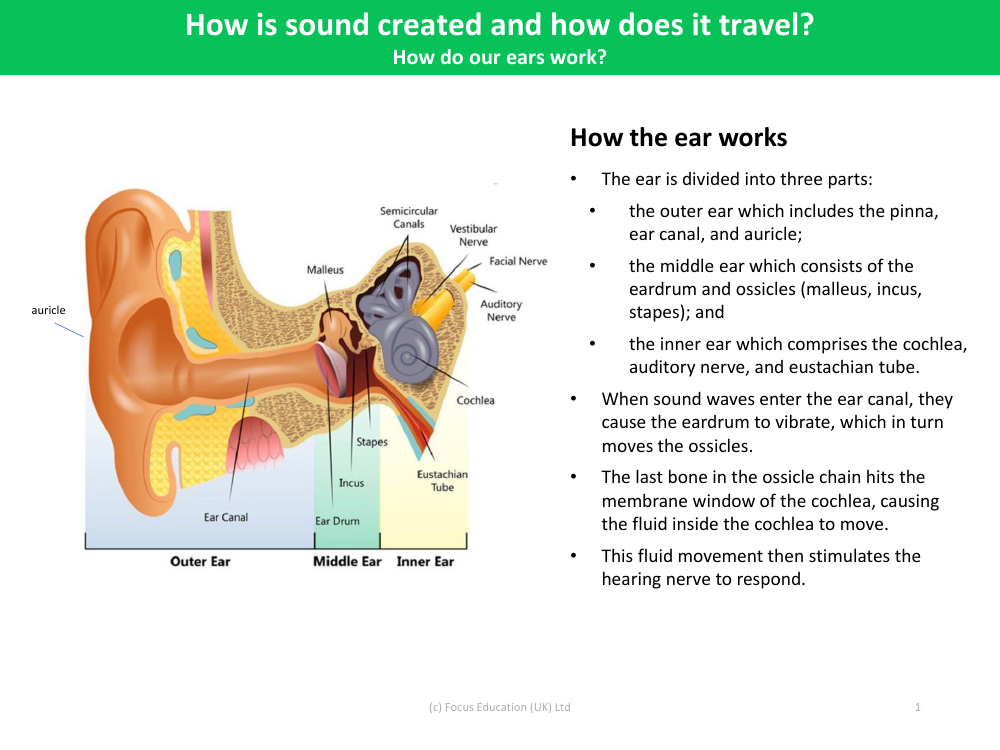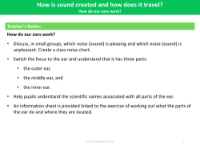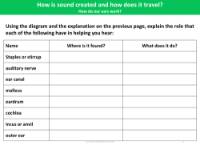How the ear works - Info sheet

Science Resource Description
The ear, a remarkable organ responsible for the sense of hearing, is anatomically divided into three distinct sections. The outer ear comprises the pinna (or auricle), which is the visible part of the ear, along with the ear canal. These components work together to capture sound waves from the environment and funnel them towards the middle ear. The middle ear contains the eardrum, a delicate membrane, and a trio of tiny bones known as the ossicles, which include the malleus, incus, and stapes. These bones play a crucial role in transmitting vibrations from the eardrum to the inner ear.
Within the inner ear lies the cochlea, a spiral-shaped organ filled with fluid and the auditory nerve, which is essential for conveying sound signals to the brain. Additionally, the inner ear includes the eustachian tube, which helps maintain pressure balance. When sound waves travel down the ear canal, they strike the eardrum, causing it to vibrate. These vibrations are then amplified by the ossicles and transferred to the cochlea. The movement of the stapes against the cochlea's membrane window generates fluid motion inside the cochlea, initiating a response from the auditory nerve, which then carries the sound information to the brain for interpretation.




